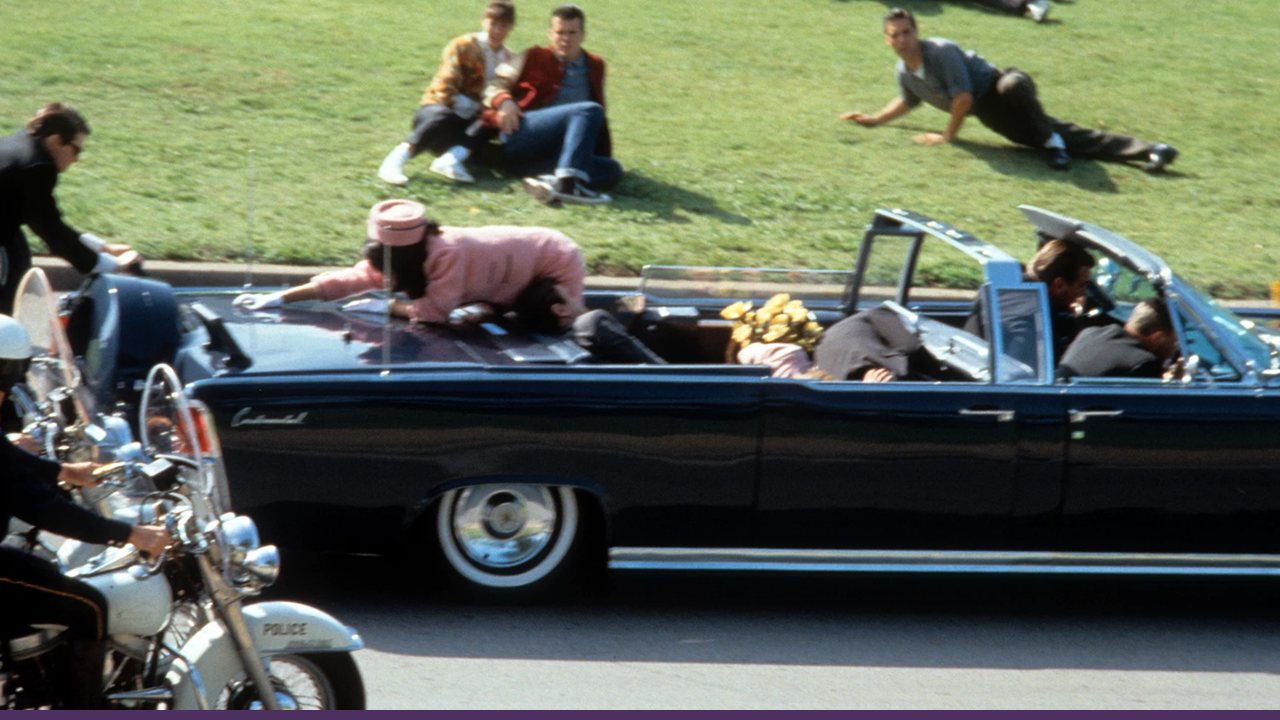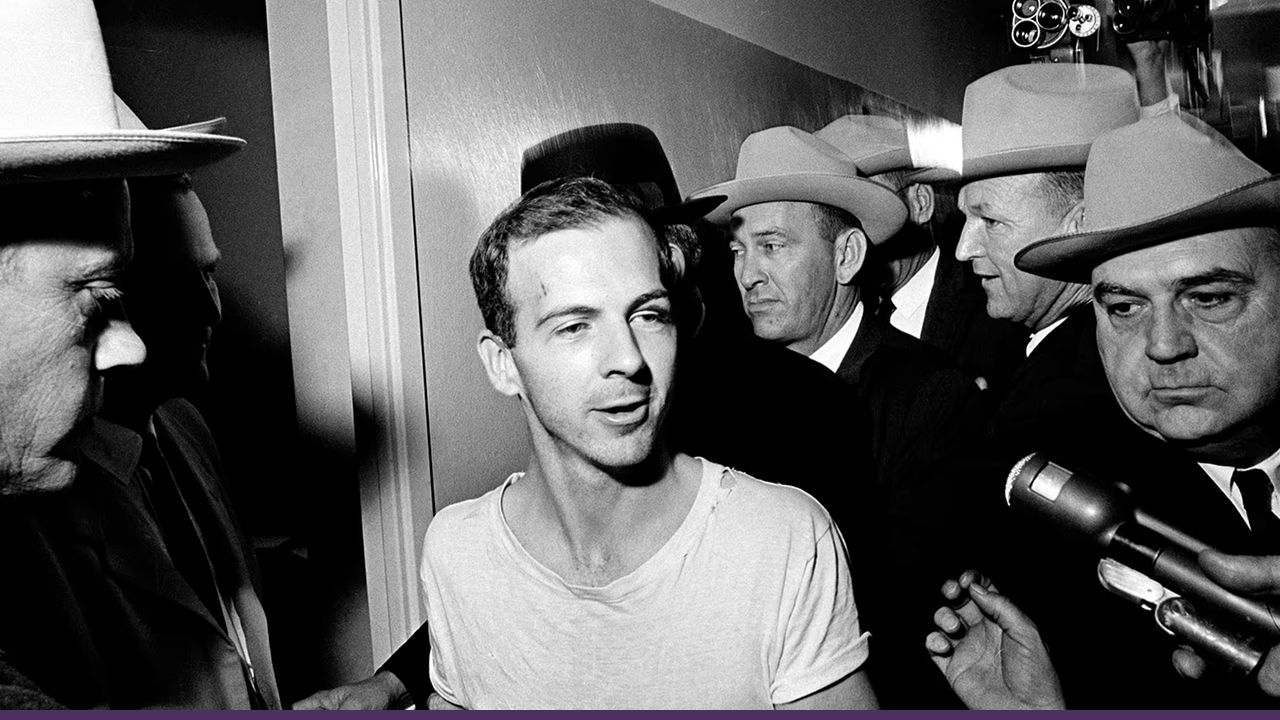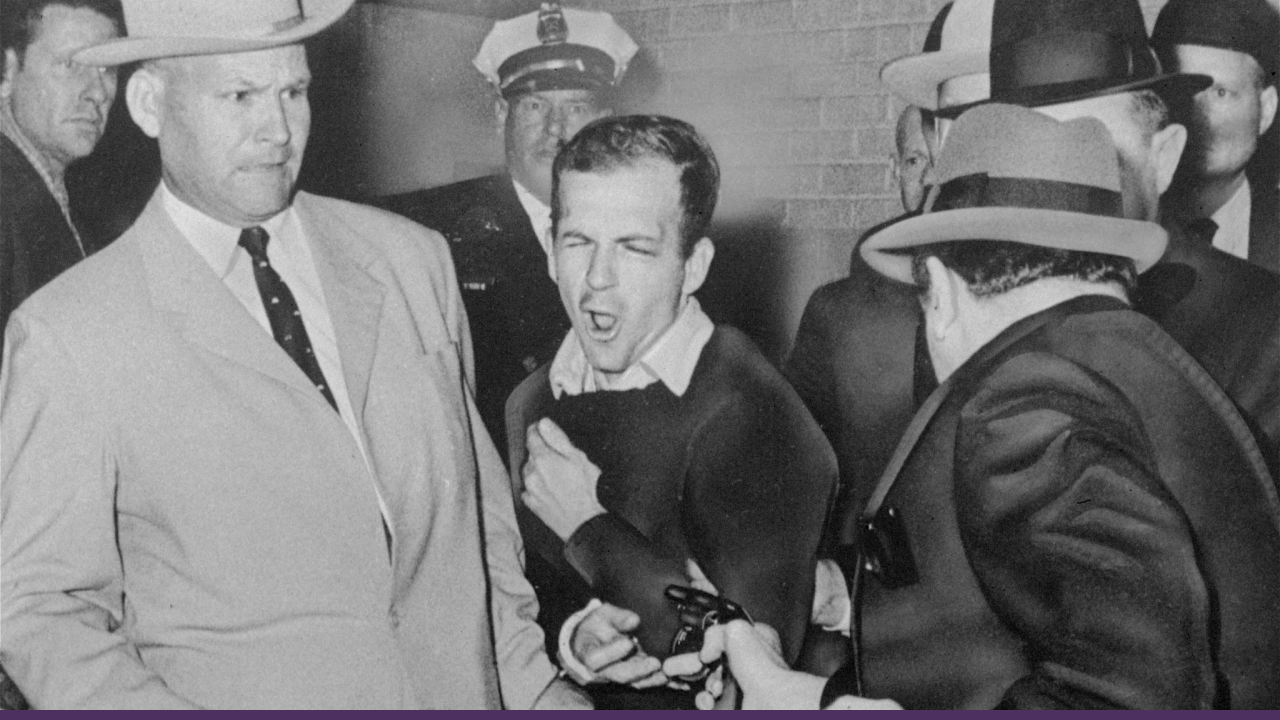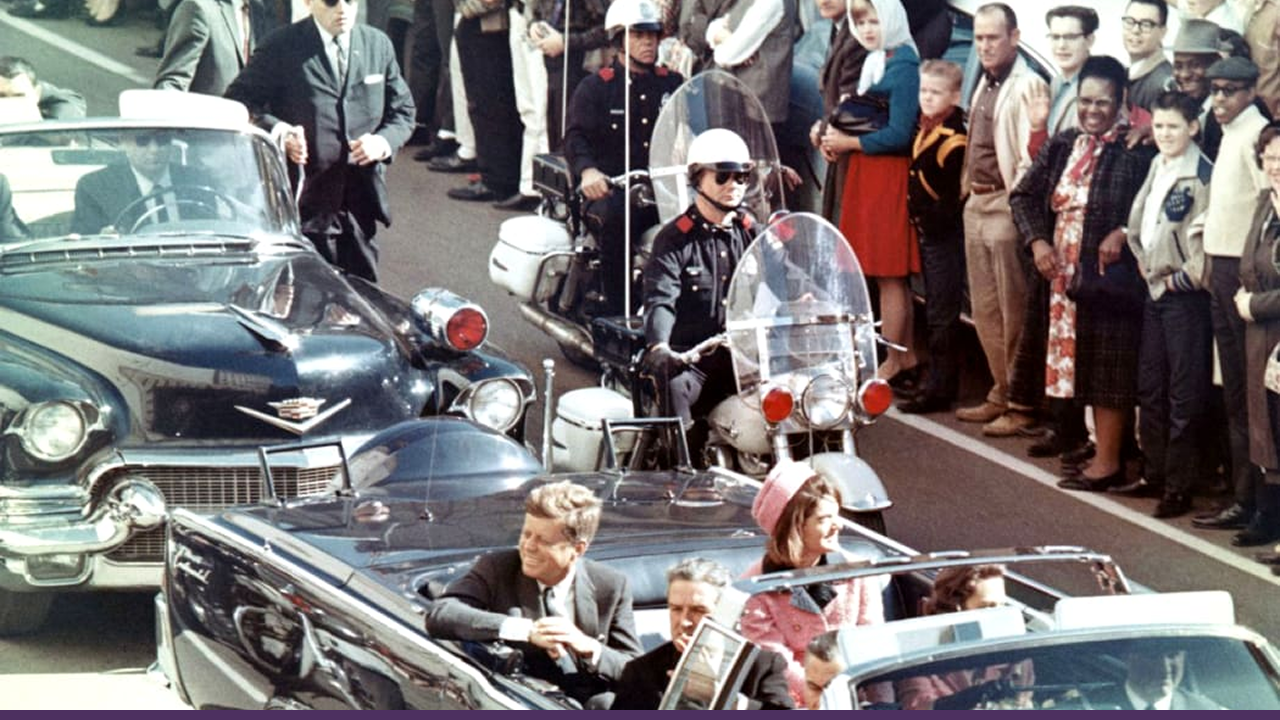15 May 2025
10 MIN READ
JFK Assassination Files: What We Know and What’s Still Hidden
Summary
More than 60 years after President John F. Kennedy was assassinated, the full truth still feels just out of reach. While thousands of government documents have been released, new headlines suggest the story isn't over.
The FBI says it has discovered new files on the JFK assassination, raising fresh questions about what we know, what we don’t, and why so many pages remain locked away.

Jodie Farber, as Jackie Kennedy, reaches across the presidential limousine in a scene from Oliver Stone’s ‘JFK.’ Credits: ctcpublic
Why do JFK assassination files exist in the first place?
After JFK was killed in Dallas on November 22, 1963, the official government line, delivered by the Warren Commission, was that Lee Harvey Oswald acted alone. But doubts were immediate and persistent.
In response to public outcry and a growing number of conspiracy theories, Congress passed the President John F. Kennedy Assassination Records Collection Act of 1992, which required the US government to gather and publicly release all documents related to the case. The goal was simple: full transparency. The result was the creation of what we now call the JFK assassination files.
JFK assassination files summary - what’s been released so far
Since 1992, the National Archives has made more than 97% of the JFK assassination files available to the public. These documents come from a range of agencies, including:
-
The FBI
-
The CIA
-
The Secret Service
-
The Warren Commission
-
The House Select Committee on Assassinations
Key findings from the JFK assassination files released to date
Oswald’s trip to Mexico City and his contact with Cuban and Soviet diplomats
One of the most puzzling elements in the JFK assassination files is Oswald’s six-day trip to Mexico City in late September 1963, just weeks before the assassination. During his stay, he visited both the Cuban and Soviet embassies, reportedly trying to obtain transit visas to travel through Cuba and reach the USSR.
What raised suspicion later was Oswald’s alleged meeting with Valeriy Kostikov, a KGB officer believed by the CIA to be connected with Soviet “Department 13”, responsible for assassinations abroad. This connection, buried in agency cables for years, gave rise to serious Cold War anxieties.
Additionally, CIA surveillance in Mexico City, wiretaps, and photo surveillance captured someone claiming to be Oswald, but the man in the photos didn’t resemble him. Some researchers believe Oswald may have been impersonated. Others suggest the surveillance records were simply mishandled or misidentified.
Internal FBI memos warning about Oswald’s safety before his death
Another major revelation in the released files involves the FBI’s internal knowledge of threats to Oswald in the days between his arrest and his murder by Jack Ruby.
The files confirm that the FBI had received a tip that Oswald was in danger, but did not take meaningful steps to protect him. An FBI agent, James Hosty, even admitted to destroying a note Oswald had written to the Bureau’s Dallas office before the assassination, a decision that stirred enormous controversy years later.

Lee Harvey Oswald talks to the press as he is led down a corridor of the Dallas police station after the assassination of US President John F. Kennedy. Credits: AP
CIA operations related to Cuba and the monitoring of Oswald abroad
The CIA’s Cold War-era operations in Cuba appear repeatedly in the assassination files, not because the agency was directly linked to the shooting, but because of how closely it monitored Cuba-related threats, including Oswald.
Many declassified memos describe how the CIA was conducting surveillance on Oswald during his time abroad, particularly in Mexico and during his previous defection to the Soviet Union in 1959. After returning to the US, Oswald resumed pro-Cuba activism, including handing out “Hands Off Cuba” pamphlets in New Orleans, actions that were likely flagged by federal intelligence services.
FBI says it has discovered new files on JFK assassination in 2025
In February 2025, the FBI announced it had discovered approximately 2,400 previously undisclosed records related to the assassination. These were found during an internal review triggered by a new executive order focused on declassifying Cold War-era government documents.
What’s inside the newly discovered JFK assassination file collection?
As of May 2025, the new JFK assassination files have not all been fully released, but the FBI confirmed coordination with the National Archives is ongoing. Several major batches have been published:
JFK assassination files released in 2025
-
March 18, 2025: Over 63,000 pages
-
March 20, 2025: 13,700 pages
-
April 3, 2025: 704 pages
All documents are part of the ongoing digitization project at archives.gov.
Takeaways from the 2025 JFK assassination files summary
-
Clarification of CIA surveillance operations in Mexico and Cuba
-
Notes about Oswald’s movements and monitored phone calls
-
Inter-agency confusion on intelligence sharing pre- and post-assassination
While nothing yet confirms a broader conspiracy, the level of agency interest in Oswald suggests more depth than the official narrative once allowed.
What the JFK assassination files don’t explain (and why that matters)
Despite the large number of files released, key questions still go unanswered:
Oswald in Mexico City
Oswald’s trip to Mexico City in September 1963 is one of the most scrutinized pieces of the JFK puzzle. He visited both the Cuban and Soviet embassies, reportedly to apply for travel visas, and possibly spoke to Soviet KGB agent Valeriy Kostikov. CIA records confirm some level of surveillance, but many details remain classified or incomplete.
Foreign links or internal failures?
Plenty of documents reference Oswald’s pro-Castro activism and past ties to the Soviet Union. But no direct connection has ever been found between those governments and the assassination itself.
What the files do suggest, however, is a pattern of poor communication between intelligence agencies. Whether this was incompetence, bureaucracy, or something more deliberate remains a matter of debate.
Withheld documents
As of 2025, approximately 4,300 documents related to the JFK assassination are still withheld in full or in part. The government justifies the redactions based on national security concerns or personal privacy protections.
What about Jack Ruby, and why did he kill Oswald?
Just two days after JFK’s assassination, the alleged assassin, Lee Harvey Oswald, was himself shot and killed on live television. His killer was Jack Ruby, a Dallas nightclub owner with known connections to both law enforcement and organized crime circles. Ruby walked into the basement of the Dallas police headquarters and fired a single bullet into Oswald’s abdomen, killing him instantly.
The public, already reeling from Kennedy’s death, now watched the prime suspect silenced before he could stand trial.

This image of Oswald’s shooting by Dallas Times Herald photographer Bob Jackson won a Pulitzer Prize. Credits: Bob Jackson/AP
Ruby’s motives – a mystery of its own
Jack Ruby insisted he acted out of grief and patriotism. In his own words, he couldn’t bear the thought of Jacqueline Kennedy returning to Dallas for a trial and witnessing Oswald defend himself. He described himself as emotionally shattered by the president’s death.
But many investigators and historians aren’t convinced.
-
Some believe Ruby’s explanation was a convenient cover for something far more organized.
-
Several witnesses and later declassified documents suggest that Ruby had ties to organized crime figures, particularly in Chicago and New Orleans.
-
The JFK assassination files include FBI references to Ruby’s frequent calls to known mobsters in the days leading up to the shooting, though nothing has ever definitively proven coordination.
What makes Ruby’s role even murkier is how easily he was able to enter the police station with a weapon, despite supposedly tight security.
Why the JFK assassination files still matter today
They’re a trust issue
The prolonged delay in fully releasing these records has left a permanent mark on how people view the US government. When authorities hold back information, even with the best intentions, it creates a vacuum, one that inevitably fills with suspicion, misinformation, and conspiracy theories.
Restoring trust starts with transparency. And in the case of JFK, many feel that trust was never earned back.

President John Kennedy in a motorcade in Dallas shortly before he was fatally shot. Credits: Walt Cisco/Dallas Morning News, via Wikimedia Commons
They’re a historical record
This isn’t just about one man’s death. It’s about the moment modern American skepticism began. The assassination and its aftermath reshaped how citizens think about power, intelligence agencies, and government accountability.
Each piece of the puzzle, every memo, call log, or embassy visit, offers insight into the forces shaping that era. For historians, it’s less about proving a conspiracy and more about understanding the full story of what happened and why.
They’re still incomplete
The recent discovery by the FBI of nearly 2,400 previously unaccounted-for documents proves that we’re still not seeing the whole picture. Despite decades of reviews, declassifications, and legal battles, the JFK assassination files remain unfinished business.
Conclusion - A puzzle still missing pieces
More than 60 years later, the JFK assassination continues to haunt the American conscience, not just because of the act itself, but because of the secrecy that followed. Every batch of documents adds a piece to the puzzle, but we’re still missing too many.
The FBI’s admission in 2025 that it had more files only deepens that feeling. Even if there’s no grand conspiracy buried in the redactions, the public deserves to know what’s in every file, because silence and secrecy leave room for doubt, and truth delayed is trust denied.
People also ask
Are the JFK files declassified?
Yes, over 97% of documents have been declassified, but about 4,300 remain redacted or withheld.
Where can I find JFK files?
You can access them through the National Archives official database here.
What were JFK’s last words?
His last words were in response to Texas First Lady Nellie Connally, who said, "Mr. President, you can't say Dallas doesn't love you." Kennedy replied, "No, you certainly can't."
Why was JFK’s casket not opened?
His family chose a closed casket due to the severe head wound, opting for dignity and privacy over a public display.
How many times was JFK shot?
The official report (Warren Commission) says two times: once in the upper back, and once fatally in the head.
